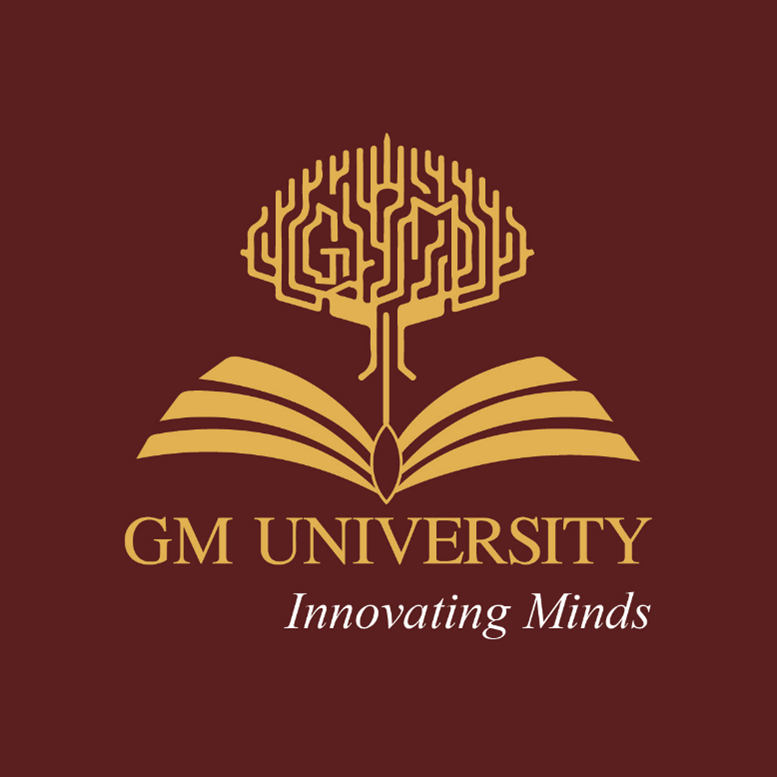- About Us
- Introduction
- Srishyla Educational Trust
- G M University
- GMU- Campus
- GMU Logo, Flag and Mascot
- GMU- Anthem
- Vision, Mission, Values, and Objectives
- Leadership
- Statutory Committees
- University Documents
- Organisation Structure
- University Best Practices
- Information and Communication Technology (ICT)
- Learning Management System (LMS)
- Human Resources (HR)
- Collaboration and Cooperation
- Campus life
- Events
- Proctorial System
- Student Placements
- IQAC
- Careers
- Contact Us
- Home About Us
- Introduction
- Srishyla Educational Trust
- G M University
- GMU- Campus
- GMU Logo, Flag and Mascot
- GMU- Anthem
- Vision, Mission, Values, and Objectives
- Leadership
- Statutory Committees
- University Documents
- Organisation Structure
- University Best Practices
- Information and Communication Technology (ICT)
- Learning Management System (LMS)
- Human Resources (HR)
- Collaboration and Cooperation
- Campus life
- Proctorial System
- Student Placements
- Contact Us
- Careers
- Programs
- Admissions
- Academics
- Research
- Skill Development
- Con, Innov.&Entr
- Library
- Grievances
Purifying and recirculating bath water for reuse: No house will be built anywhere on earth without its own water recycling system
Purifying and recirculating bath water for reuse involves a multi-step process designed to remove contaminants, soap, hair, skin flakes, and potentially harmful microbes, making the water safe and clean for reuse. This approach not only conserves water but also reduces wastewater generation, aligning with sustainable living practices. Below is an overview of how to set up a system for purifying and recirculating bath water:
1. Collection and Pre-filtration
Collection: The first step is to collect the used bath water in a holding tank. This tank temporarily stores the water before it undergoes purification. It's essential to ensure the tank is clean and made from materials that do not leach chemicals into the water.
Pre-filtration: Before any intensive purification, the water passes through pre-filters to remove larger particles such as hair, skin flakes, and other solid debris. This step helps protect and extend the life of subsequent, more refined filtration systems.
2. Microfiltration or Ultrafiltration
After pre-filtration, the water is processed through microfiltration (MF) or ultrafiltration (UF) systems. These systems use membranes with small pores to remove finer particles, bacteria, and some viruses from the water. MF and UF are effective in clarifying the water and reducing the microbial load.
3. Activated Carbon Filtration
Activated carbon filtration is used to remove organic compounds, chlorine, and chloramines, which are responsible for odours and can irritate the skin and eyes. This stage also helps in removing any soap residues, ensuring the water is pleasant for reuse.
4. Reverse Osmosis (Optional)
For an even higher purity level, especially in areas where water quality is a significant concern, a reverse osmosis (RO) system can be employed. RO filters are capable of removing up to 99% of dissolved salts (ions), particles, colloids, organics, bacteria, and pyrogens from the feed water (although bacteria and pyrogens are not a concern in properly treated water).
5. Disinfection
UV Disinfection: Exposing the water to ultraviolet (UV) light is an effective way to destroy bacteria, viruses, and other pathogens, ensuring the water is safe for reuse.
Chemical Disinfection: Alternatively, or in addition, chemical disinfectants such as chlorine or ozone can be used. However, care must be taken to control the dosage to avoid skin and eye irritation during subsequent baths.
6. pH Adjustment and Conditioning
Adjusting the pH and conditioning the water may be necessary to ensure it matches the natural pH of the skin, preventing irritation. Additionally, softening agents may be added if the water is hard, to prevent scale buildup in the recirculation system and on bath fixtures.
7. Final Filtration and Polishing
A final pass through a set of fine filters ensures that any remaining particulate matter is removed, and the water clarity is suitable for reuse. This stage might include a final UV pass or aeration to ensure the water is oxygenated and fresh.
System Integration and Monitoring
Integrating these components into a cohesive system requires careful planning and consideration of the flow rates, tank sizes, and maintenance access. Continuous monitoring of water quality parameters, such as turbidity, pH, and disinfectant levels, is crucial to ensure the safety and comfort of the reused water.
Implementing a water recirculation system for bath water reuse is technically feasible and can significantly contribute to water conservation efforts. However, it's essential to comply with local regulations and guidelines on water reuse and ensure the system is designed and maintained correctly to guarantee water safety and hygiene.

